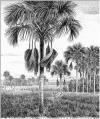Abstract
The present article focused on the most relevant aspects of management and administration of the Brazilian Sites of theWorld Natural Patrimony. Concepts and principles are also approached in order to understand the strategy which conductedsix natural sites into the World Patrimony List, between 1999 and 2003. Those sites are located in areas of the Alantic Forest,on Marine-Coastal Biome, in the Cerrado (Savanna Biome), and in the region of Pantanal and Amazones. The structure of thispaper initiates analyzing the central elements, the sites itself, including a brief historical of the whole process up to recognition.It continues with the description of the main Brazilian Biomes, as the mainframe for that conservationist strategy. Thisstructure also includes a description of the most relevant problems and challenges for management of any of the six naturalsites, responsible for more than 5 million hectares organized within 45 protected areas representing a significant part of themost important ecosystems of the planet`s biodiversity. Among the conclusions, this article support the argument that it waspositive to introduce those areas into the World Patrimony List, specially because of their consequent management success. Italso supports the argument that it is necessary to stand for the strategy of having at least one site for every Biome before thenational list would be considered a finished reality.Apuntes is registered under a Creative Commons Attribution 4.0 International Public License. Thus, this work may be reproduced, distributed, and publicly shared in digital format, as long as the names of the authors and Pontificia Universidad Javeriana are acknowledged. Others are allowed to quote, adapt, transform, auto-archive, republish, and create based on this material, for any purpose (even commercial ones), provided the authorship is duly acknowledged, a link to the original work is provided, and it is specified if changes have been made. Pontificia Universidad Javeriana does not hold the rights of published works and the authors are solely responsible for the contents of their works; they keep the moral, intellectual, privacy, and publicity rights.
Approving the intervention of the work (review, copy-editing, translation, layout) and the following outreach, are granted through an use license and not through an assignment of rights. This means the journal and Pontificia Universidad Javeriana cannot be held responsible for any ethical malpractice by the authors. As a consequence of the protection granted by the use license, the journal is not required to publish recantations or modify information already published, unless the errata stems from the editorial management process. Publishing contents in this journal does not generate royalties for contributors.


